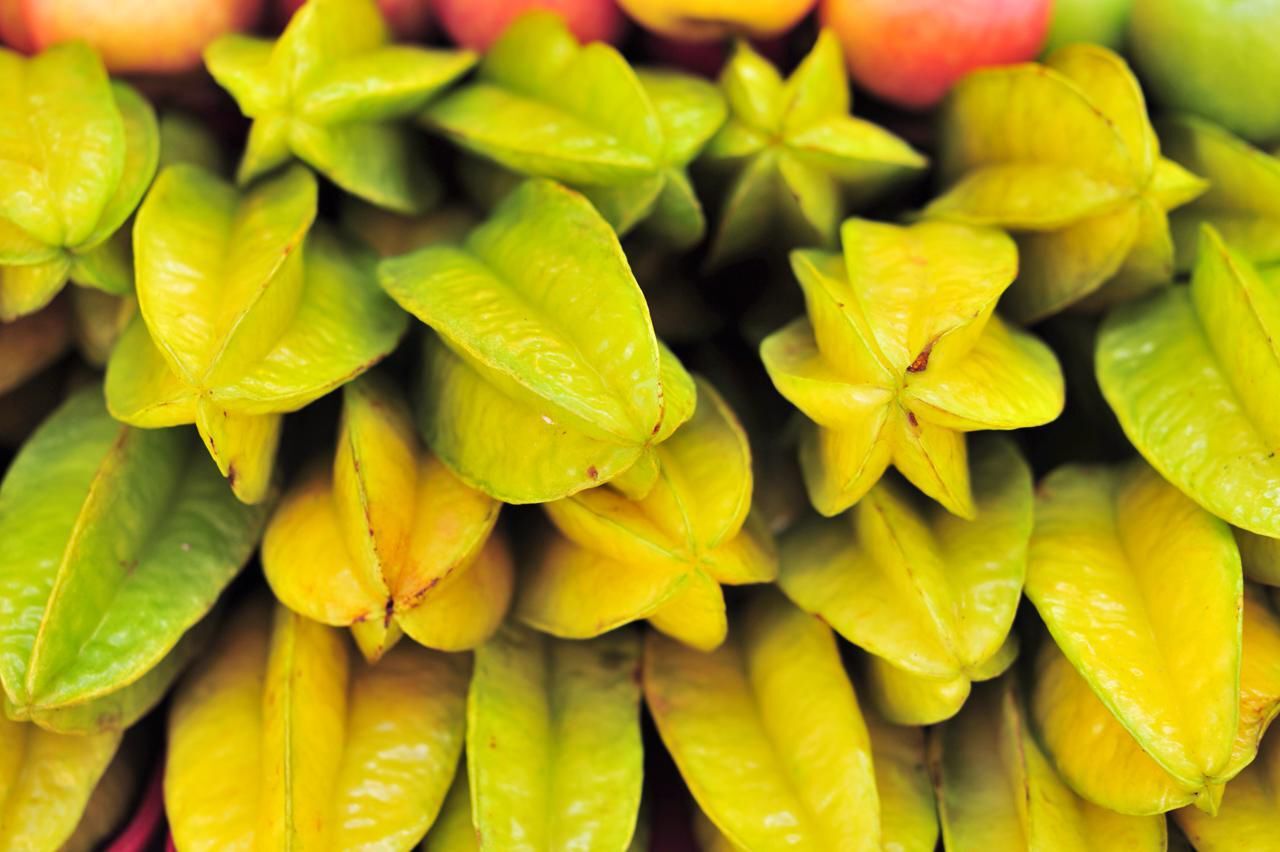
Starfruit, also known as carambola, is a tropical fruit that stands out with its unique star shape when sliced. Originating from Southeast Asia, this fruit has made its way into kitchens and markets worldwide. But what makes starfruit so special? Packed with vitamins, minerals, and antioxidants, it offers numerous health benefits. Its flavor, a blend of sweet and tangy, can enhance various dishes, from salads to desserts. Whether you’re a foodie, a health enthusiast, or just curious, learning about starfruit can be both fun and informative. Ready to dive into some fascinating facts about this stellar fruit? Let’s get started!
Key Takeaways:
- Starfruit, also known as carambola, is a tropical fruit with a unique star-like shape and tangy flavor. It's packed with vitamin C, low in calories, and can be used in salads, juices, and even as a garnish for cocktails.
- If you're interested in growing your own starfruit, make sure to provide it with plenty of sunlight, well-drained soil, and regular watering. Once ripe, the fruit turns yellow and feels firm, ready for harvesting.
What is Starfruit?
Starfruit, also known as carambola, is a tropical fruit that has gained popularity for its unique shape and tangy flavor. Its star-like cross-section makes it a visual treat, while its taste offers a delightful mix of sweet and sour. Here are some fascinating facts about this exotic fruit.
-
Starfruit Origin: Native to Southeast Asia, particularly Malaysia, the Philippines, and India.
-
Scientific Name: Known scientifically as Averrhoa carambola.
-
Distinct Shape: When sliced, starfruit forms a perfect five-pointed star.
-
Nutrient-Rich: Packed with vitamin C, fiber, and antioxidants.
-
Low-Calorie: Contains only about 30 calories per fruit, making it a healthy snack.
Health Benefits of Starfruit
Starfruit isn't just pretty to look at; it also offers numerous health benefits. From boosting immunity to aiding digestion, this fruit is a powerhouse of nutrients.
-
Boosts Immunity: High vitamin C content helps strengthen the immune system.
-
Aids Digestion: Rich in dietary fiber, which promotes healthy digestion.
-
Antioxidant Properties: Contains antioxidants that help fight free radicals.
-
Hydration: Composed of about 91% water, keeping you hydrated.
-
Heart Health: Low in sodium and cholesterol, beneficial for heart health.
Culinary Uses of Starfruit
Starfruit's unique flavor and texture make it a versatile ingredient in various dishes. Whether used fresh or cooked, it adds a tropical twist to any meal.
-
Salads: Adds a refreshing crunch to fruit and vegetable salads.
-
Juices and Smoothies: Blends well with other fruits for a tangy drink.
-
Desserts: Can be used in tarts, pies, and other sweet treats.
-
Garnish: Its star shape makes it a popular garnish for cocktails and dishes.
-
Cooking: Can be sautéed, grilled, or used in sauces and chutneys.
Growing Starfruit
Interested in growing your own starfruit? It's easier than you might think. With the right conditions, you can enjoy fresh starfruit from your garden.
-
Climate: Thrives in tropical and subtropical climates.
-
Soil: Prefers well-drained, sandy loam soil.
-
Sunlight: Requires full sun for optimal growth.
-
Watering: Needs regular watering, especially during dry periods.
-
Harvesting: Ready to harvest when the fruit turns yellow and feels firm.
Fun Facts About Starfruit
Starfruit has some quirky and interesting aspects that make it even more intriguing. Here are a few fun facts to tickle your curiosity.
-
Historical Use: Used in traditional medicine in various cultures.
-
Cultural Significance: Symbolizes good luck in some Asian cultures.
-
Varieties: Comes in both sweet and sour varieties.
-
Shelf Life: Can be stored at room temperature for up to two weeks.
-
Starfruit Trees: Can grow up to 30 feet tall, producing fruit multiple times a year.
Starfruit's Unique Charm
Starfruit, with its distinctive shape and tangy flavor, offers more than just a visual treat. Packed with vitamin C, fiber, and antioxidants, this tropical fruit supports immune health and digestion. Its low-calorie content makes it a great snack for those watching their weight. However, people with kidney issues should be cautious due to its oxalate content.
From culinary uses to health benefits, starfruit shines in various aspects. It can be enjoyed fresh, in salads, or as a garnish. Its versatility extends to juices, jams, and even savory dishes. Whether you're a foodie or a health enthusiast, starfruit brings something special to the table.
Next time you spot this star-shaped fruit, give it a try. You might just find a new favorite.
Frequently Asked Questions
Was this page helpful?
Our commitment to delivering trustworthy and engaging content is at the heart of what we do. Each fact on our site is contributed by real users like you, bringing a wealth of diverse insights and information. To ensure the highest standards of accuracy and reliability, our dedicated editors meticulously review each submission. This process guarantees that the facts we share are not only fascinating but also credible. Trust in our commitment to quality and authenticity as you explore and learn with us.


